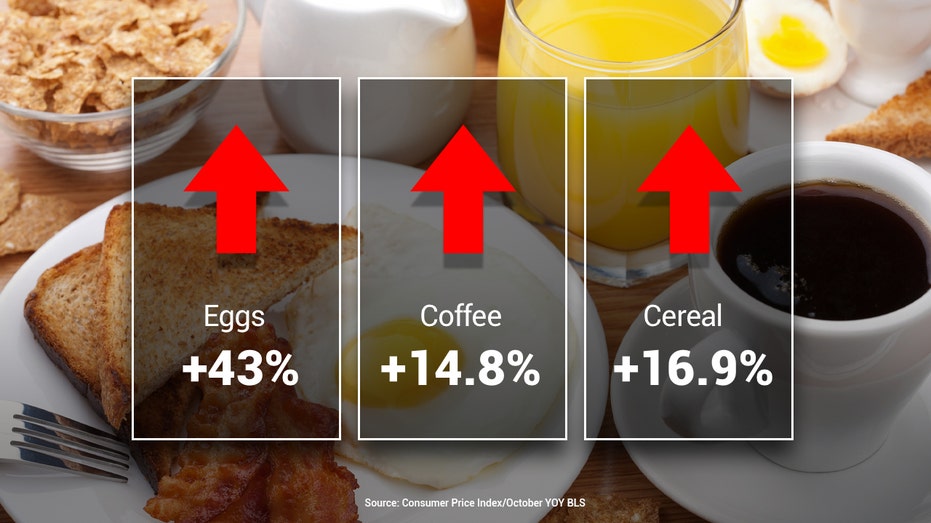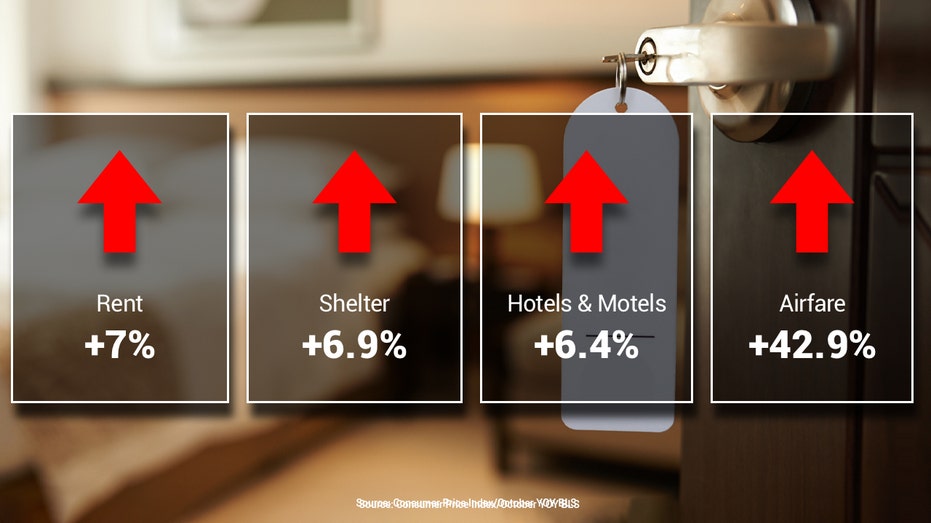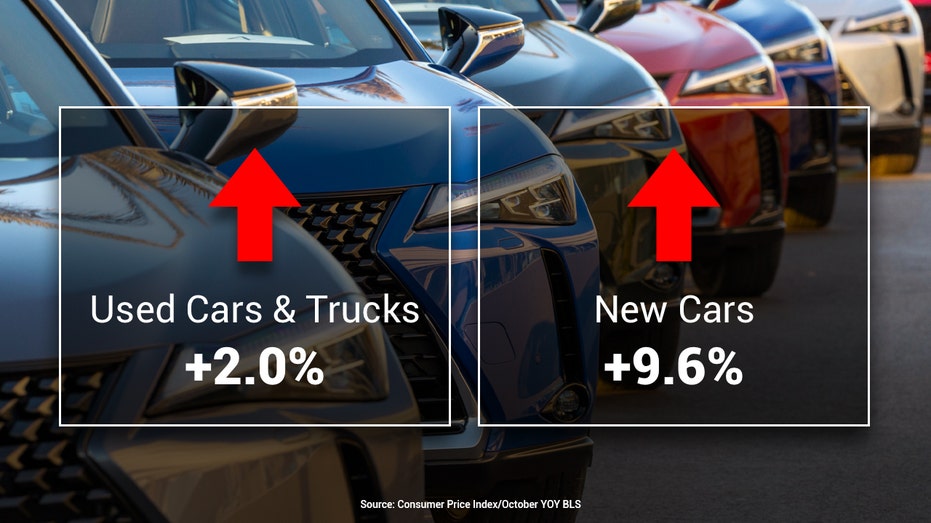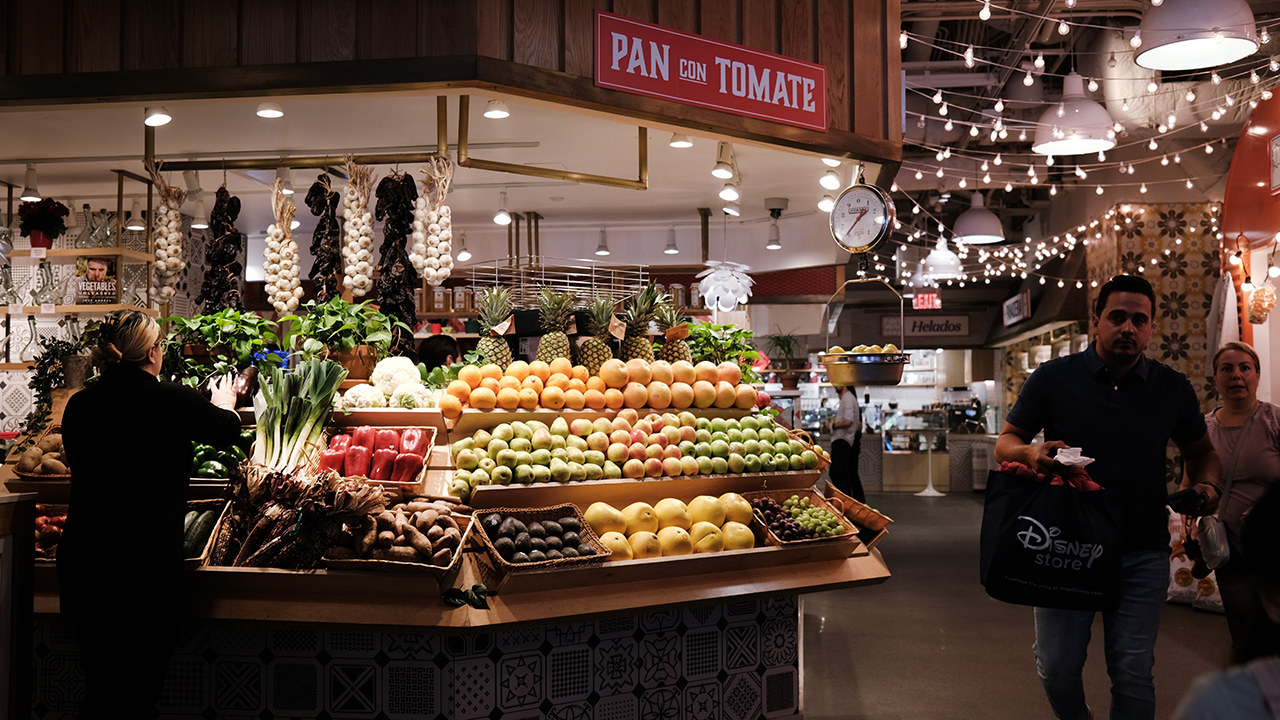October inflation breakdown: Where are Americans seeing prices rise the fastest?
Steep increases in food, rent costs drove inflation higher last month
Inflation is beginning to 'unwind': Brian Belski
BMO Capital Markets Chief Investment Strategist Brian Belski thinks the market can still rally if the decreasing inflation 'trend' continues.
Inflation continued to grip the U.S. economy in October as the soaring cost of rents and food kept consumer prices running near a 40-year-high.
The Labor Department said Thursday the consumer price index, a broad measure of the price for everyday goods, including gasoline, groceries and rents, rose 0.4% in October from the previous month. Prices climbed 7.7% on an annual basis.
Those figures were both lower than the 8% headline figure and 0.5% monthly increase forecast by Refinitiv economists, a potentially reassuring sign for the Federal Reserve as it tries to tame runaway inflation with a series of aggressive interest rate hikes. It marked the slowest annual inflation rate since January.
In another sign that suggests underlying inflationary pressures in the economy are starting to slow, core prices — which strip out the more volatile measurements of food and energy — climbed 0.3% in October from the previous month, down from 0.6% in September. From the same time last year, core prices jumped 6.3%.
INFLATION HOLDS GRIP ON US ECONOMY AS PRICES REMAIN STUBBORNLY HIGH

Shoppers in a Kroger supermarket Oct. 14, 2022, in Atlanta. (Elijah Nouvelage/AFP via Getty Images / Getty Images)
"Inflation slowing to its lowest annual rate since January is news that both the Fed and investors can get behind," said Mike Loewengart, the head of model portfolio construction at Morgan Stanley. "But remember that even as we see a slowdown, prices remain elevated and have a long way to go before normalizing."
Here is a breakdown of where Americans are seeing prices rise the fastest — and where there has been some reprieve from higher inflation — as they continue to wrestle with the worst sticker shock in a generation:
Food

Food has been one of the most visceral reminders of red-hot inflation for Americans, with grocery prices climbing 0.5% over the month, according to unadjusted figures. On an annual basis, food prices have soared 12.4%.
Consumers paid more for a number of everyday staples in October. The cost of eggs, for instance, surged 10.1% in the one-month period from September to October. Other necessities that increased in price included cereal (0.6%), bread (0.9%), fresh fish and seafood (0.6%) and fresh vegetables (0.5%), including tomatoes (2.5%) and lettuce (3.3%).
BILLIONAIRE DAVID RUBENSTEIN WARNS INFLATION WILL BE 'DIFFICULT' FOR THE FED TO REDUCE
Rent

In another worrisome trend that will further squeeze U.S. households, shelter costs, which account for about 40% of the core inflation increase, rose 0.7% for the month.
On an annual basis, shelter costs have climbed 6.9% over the past year, the fastest increase since 1982.
Rent costs jumped 0.8% over the month and 7.5% on an annual basis. Rising rents are a concerning development because higher housing costs most directly and acutely affect household budgets. Another data point that measures how much homeowners would pay in equivalent rent if they had not bought their home, climbed 0.7% in October from the previous month.
Fed's rate path unlikely to change after CPI shows inflation cooling: Bill Baruch
Blue Line Capital President Bill Baruch reacts to stocks soaring after new CPI data shows inflation edging down on 'Varney & Co.'
With food and shelter costs continuing to march higher, U.S. households are facing increased financial pressure. Average hourly earnings actually declined 0.1% in October on an inflation-adjusted basis. Compared with the previous year, earnings are down 2.8%, according to a separate BLS report.
THE FED'S WAR ON INFLATION COULD COST 1M JOBS
"Shelter costs rose in October and contributed to over half of the rise in total inflation," said Jeffrey Roach, chief economist at LPL Financial. "As the housing market cools, this category will also ease, but we may have to wait until next year before it meaningfully dampens headline inflation."
Energy

Gas prices surged 4% in October after declining the previous two months, according to the adjusted inflation data. The increase came as the Saudi-led OPEC and its allies, known as OPEC+, announced they would cut oil production by 2 million barrels.
INFLATION MAY HIT SOME RETIREES TWICE
The average price for a gallon of regular gas was $3.80 nationwide Thursday, according to AAA. Still, that marks a major drop from the record high of $5.01 set in mid-June, and is down from one month ago, when prices sat at $3.91. By comparison, one year ago, the average price of gas sat around $3.41.
In total, energy prices rose 1.8% last month, boosted by a 19.8% spike in fuel oil.
Cars

Unfortunately for Americans who needed to buy a car in September, the price of new vehicles continued to march higher.
The cost of new vehicles is up 8.4% from the prior year, according to the unadjusted data, largely because semiconductor shortages continue to delay car manufacturing. On a monthly basis, the price of new vehicles rose 0.5%, according to the unadjusted Labor Department data.
However, used car and truck prices, which have been a major component of the inflation increase, actually fell 2.3% in October from the previous month. The cost of a used car or truck is still about 2% higher than it was one year ago.

Shoppers look over produce at a store in Rosemead, Calif., June 28, 2022. (Frederic J. Brown/AFP via Getty Images / Getty Images)
GET FOX BUSINESS ON THE GO BY CLICKING HERE
Travel and transportation
Airline fares rose again in October, with prices up 3.5% from the previous month. Tickets are up 42.9% over the past year, according to unadjusted data — in part because airlines are passing along the cost of more expensive fuel to consumers.






















